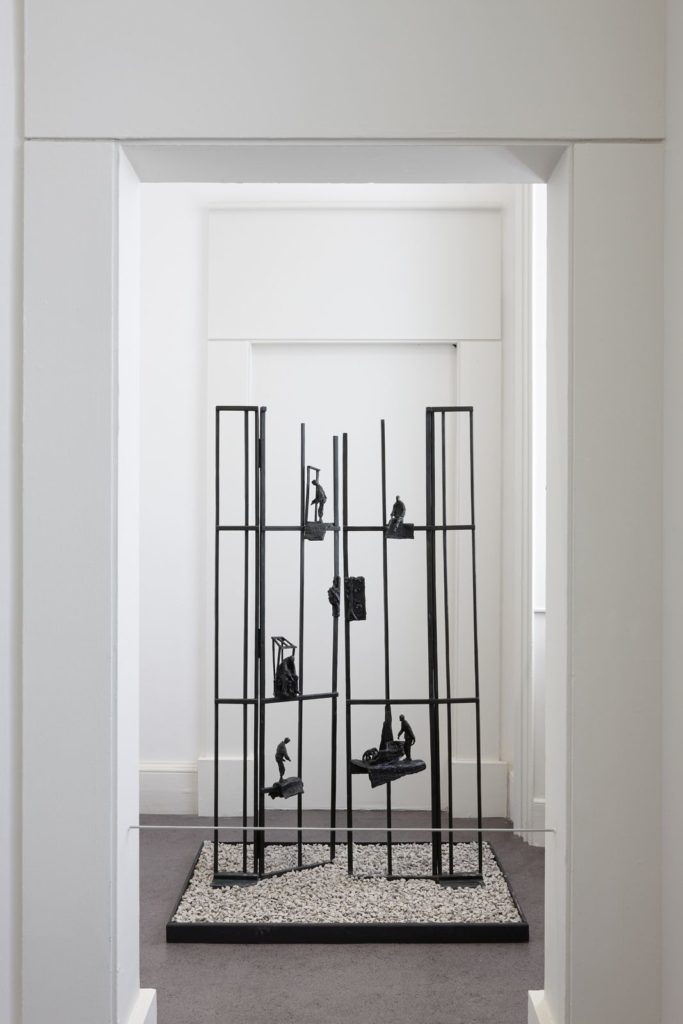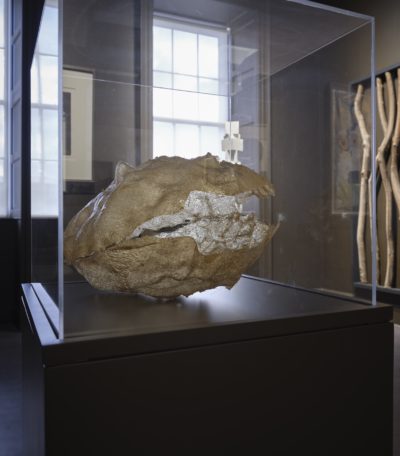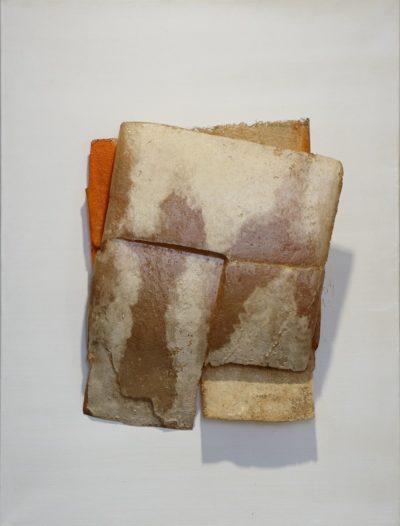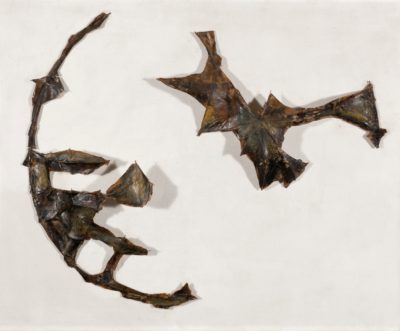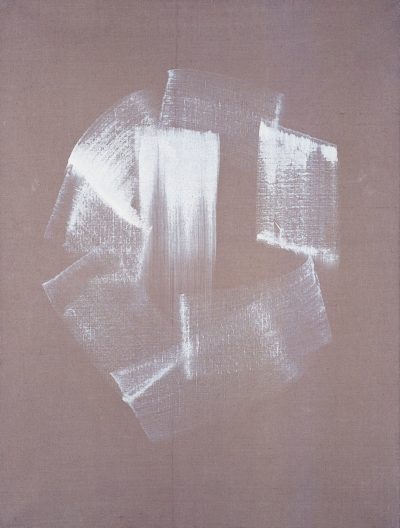The Gate, 1994
‘The Gate’ by Deborah Brown draws on two sources of inspiration, both dealing with human freedom.
The scenarios on the left side of ‘The Gate’, were suggested by Mahler’s cycle ‘Des Knaben Wonderhorn’. A man is imprisoned in his cell but his thoughts are free. He is depicted sitting within an open grid box. In his thoughts he goes up into the mountains and knocks on the door of his lover, who is symbolised by an open door frame.
On the right side the scenarios have been suggested by the Irish legend of the Merrow, which tells the story of a fisherman called Jack and his encounter with a Merrow, or man of the sea. Jack befriends the Merrow, called Coomarra and goes with him to the bottom of the sea where Coomarra shows him the room where he keeps the souls of drowned sailors in his “soul cages”. They look like lobster pots and Coomarra explains that during a storm he sets out the cages and the souls of drowned sailors make for them as shelter. Worried by this, Jack contrives to set the souls free. He invites the Merrow to his house on land, and gets him drunk. When Coomara falls asleep, Jack goes back down to the seabed and releases the souls.
“My scenarios portray Jack sitting on the rock waiting for Coomara to come, and on the seabed with a lobster pot like cage about to release the souls.”*
*Deborah Brown, 2003
| Medium | Bronze |
| Dimensions | Unframed, 170 x 111 x 75 cm |
| Credit Line | IMMA Collection: Purchase, 2002 |
| Item Number | IMMA.1521 |
| Copyright | For copyright information, please contact the IMMA Collections team: [email protected]. |
| Tags |
